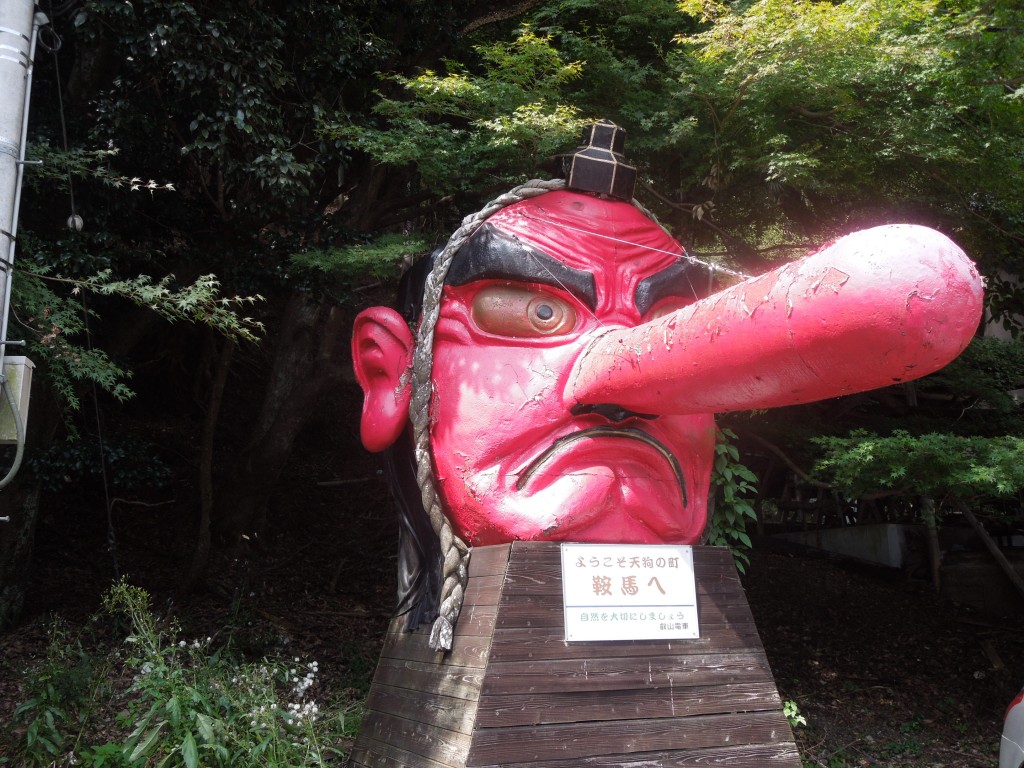
The famous Kurama Tengu that welcomes visitors at the small railway station
There are so many must-sees and must-dos in Kyoto, but one of the favourites with people who actually live here is the Kurama to Kibune walk in the northern hills. It’s two and half hours up and over the Kurama hill, and takes in two shrines, a temple and some gorgeous nature.
Yuki Jinja is dwarfed by the expansive confines of Kurama Temple within which it sits. The Meiji Restorationists sought to separate Shinto and Buddhism, but here is a classic example of just how integrated the two used to be. You can’t visit the shrine without entering the temple grounds.
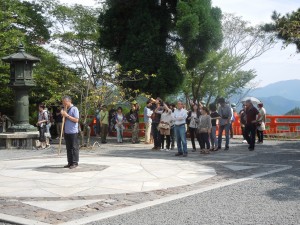
Kurama Temple has a 'power spot' in front of the main building where people queue to pray
Kurama Temple is ancient, historic and has several points of note:
* Founded around 770, it used to be a Tendai temple but is now independent in a sect of its own.
* It’s where Ushiwakamaru (the young Yoshitsune) was sent to train as a priest in the twelfth century.
* While at Kurama, Yoshitsune trained in martial arts with tengu (possibly warrior-monks from Mt Hiei)
* One of the temple’s three deities is Mao-son, who descended to earth from Venus (probably a meteorite)
* The temple is the birthplace of reiki massage; the founder Mikao Usui received the basics while on retreat here
* Recently Kurama has benefited from the power-spot boom and increasingly has a pilgrimage feel
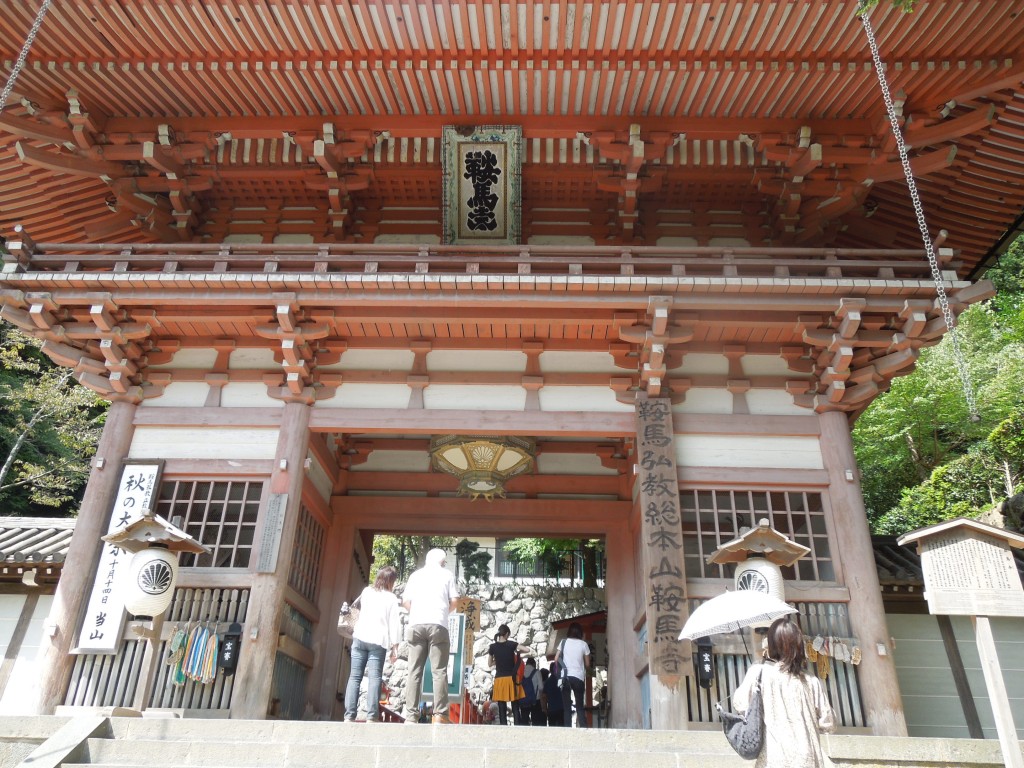
Entrance to Yuki Jinja is through the main gate of Kurama Temple and halfway up the hill
Yuki Jinja dates back to 940, when kami in the Imperial Palace were moved here during a time of natural disasters in the capital. As a Tendai temple, Kurama nourished kami and the spirit of place. With its lush woods and ever-flowing streams, the whole hillside speaks of the beneficence of nature: kami nature and buddha nature happily coincide. (For an earlier report on talks about harmony with nature given by the respective heads of Kurama Temple and Kibune Jinja, click here.)
The shrine is famous for hosting the Kurama Torch Festival on Oct 22 every year. It’s said to recreate the torch-fires that were lit to greet the original arrival of the kami. The whole village of Kurama takes part with the main street lit up by the flames. It’s said to be good luck if the sparks land on you, though maybe not such good luck for your clothes…
The Haiden (Worship Hall) was rebuilt in 1607 by Hideyori (son of Hideyoshi) and is said to have an unusual construction style divided into two rooms. The stone guardian dogs are designated an important cultural property. But the most striking feature is the remarkable 800-year old sacred cedar that stands at the side of the steps leading up to the shrine. It’s magnificent. Standing at the base, you feel humbled by the sheer height of the towering tree as it shoots straight upwards in its determination to touch the sky.
As the various signboards suggest, the whole ethos of the hillside complex – temple and shrine alike – is directed towards the blessings and wonder of nature. Here is one of the supreme examples.
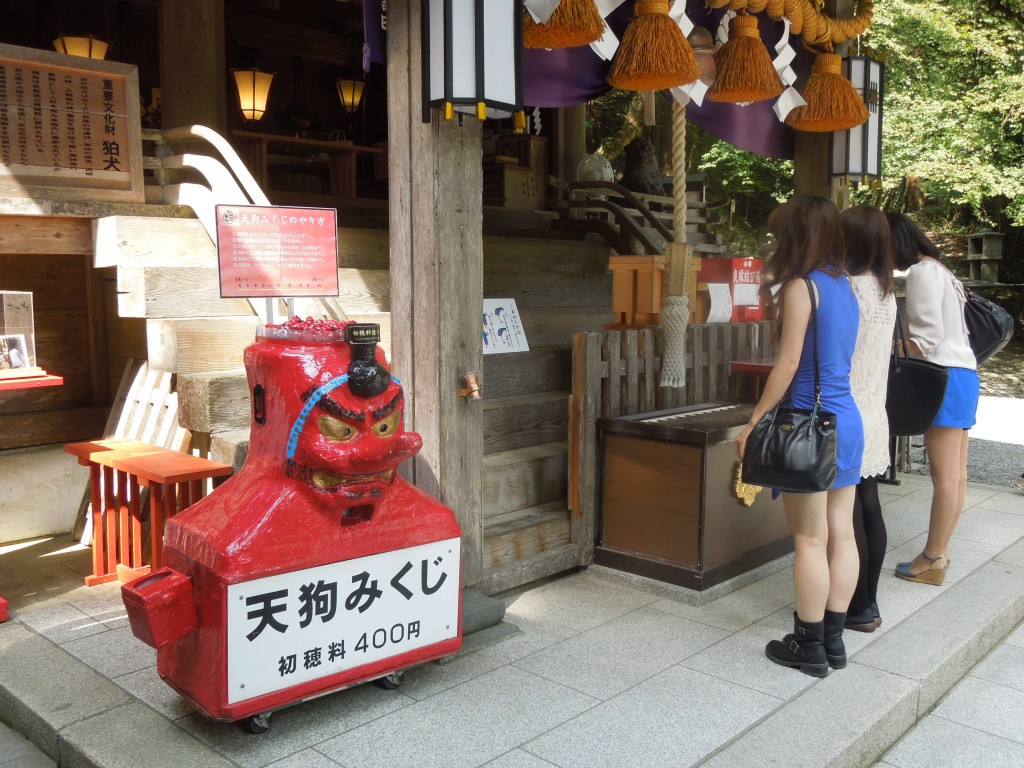
Worship in front of the shrine, with tengu fortune slips offered for Y400.
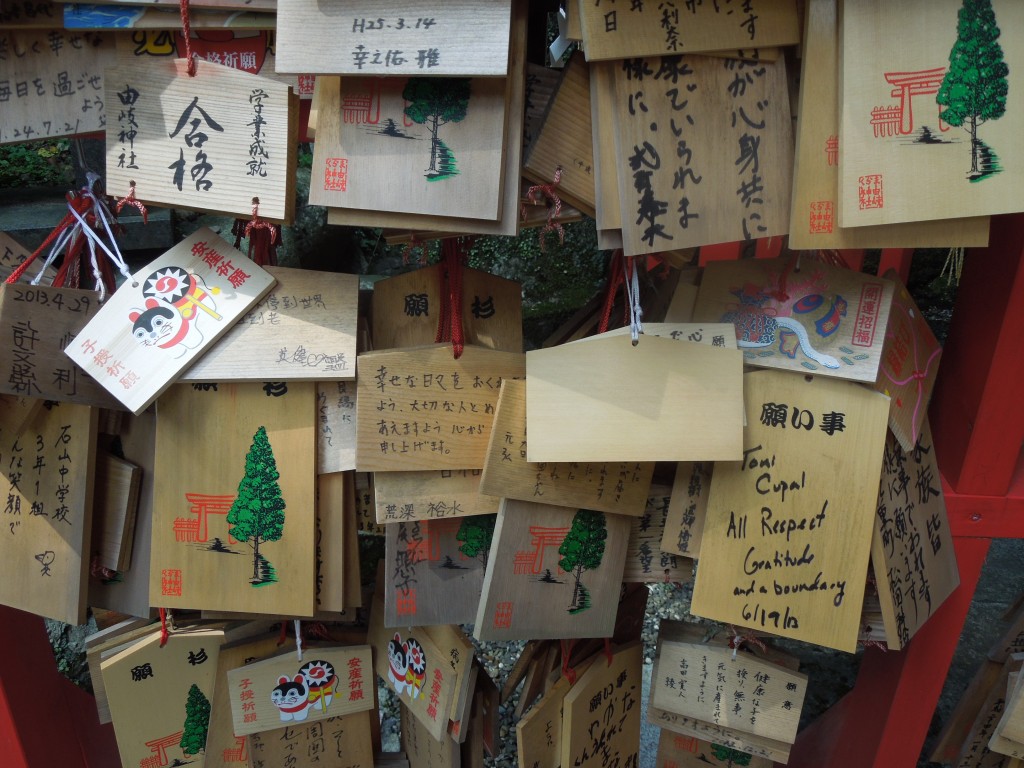
The ema votive tablets at Yuki Jinja, featuring the sacred tree
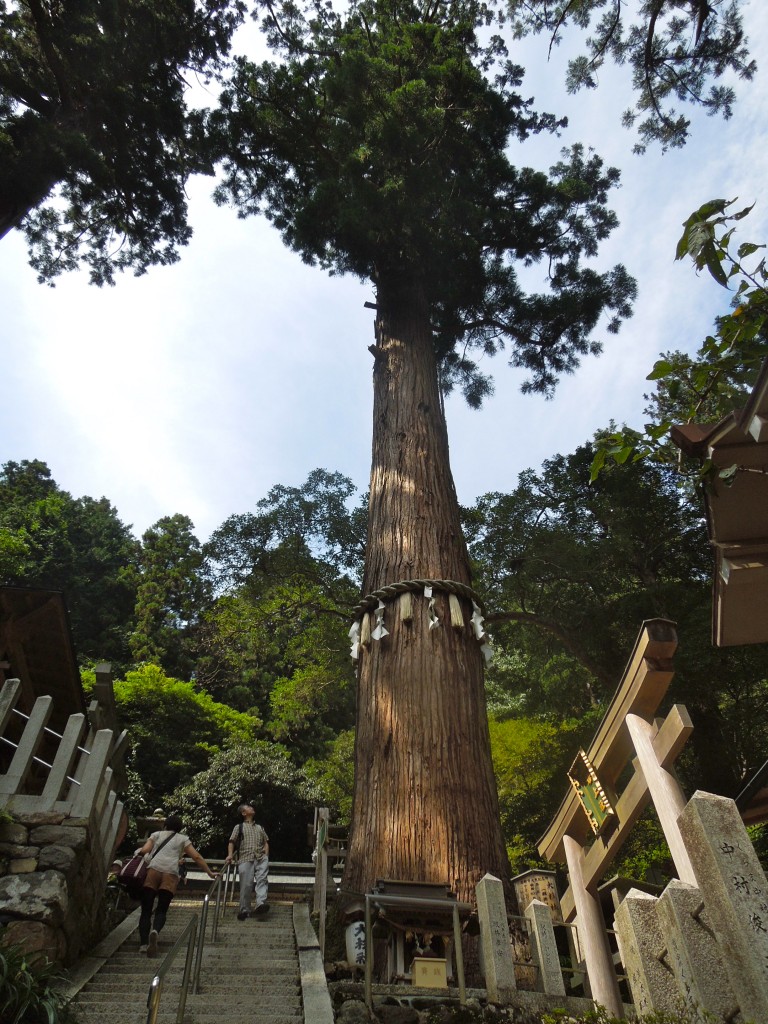
Sacred tree soaring high after 800 years of growth
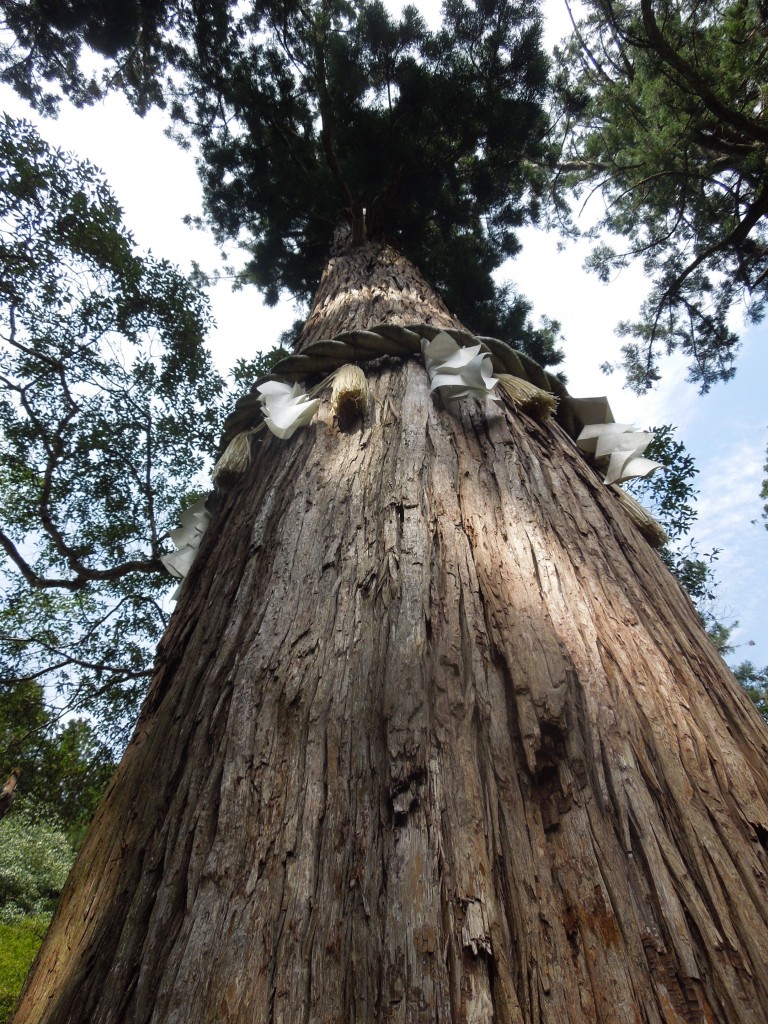
Looking up towards the gods

I am happy to see you celebrate this most marvelous walk, John. I have always enjoyed walking in the opposite direction–from Kibune to Kurama, having lunch on the river in Kibune, enjoying the maze of roots on top of the mountain where Yoshitsune practiced his martial foot work, and coming down into the welcome sight of Kuramadera. There is also an open air sento in Kurama where one can soak away the fatigue of the walk. Japan at its best!
John! Many thanks for the feedback, and as I know what a walker you are, it’s great to get your feedback. And yes, I’ve done the walk the way you mention, which does make good sense not only for the reasons you give, but because you get to board the train at the departure point where you can be sure of getting a seat. Somehow, though, I prefer starting with the entrance through Kurama Temple gate and descending the steep slope to Kibune, where the toll-gate does feel very much like the rear entry to the mountain.
Both hikes are great especially in the summer. There is also a wonderful restaurant just in front of the entrance of the temple. The name is Yoshuji, 075- 741-2848. It has healthy, delicious vegetarian meals. The owner is a big supporter of the Mingei Movement. Inside, it seems as if you are in a folk art museum. Highly recommended. John H. the next time you find yourself in Kyoto, lets head there for lunch along with our Green Shinto host.
Interesting that Venus is represented, since Venus is seen as a representation of Kokuzo Bosatsu, a ‘star’ in the Shingon Buddhist pantheon